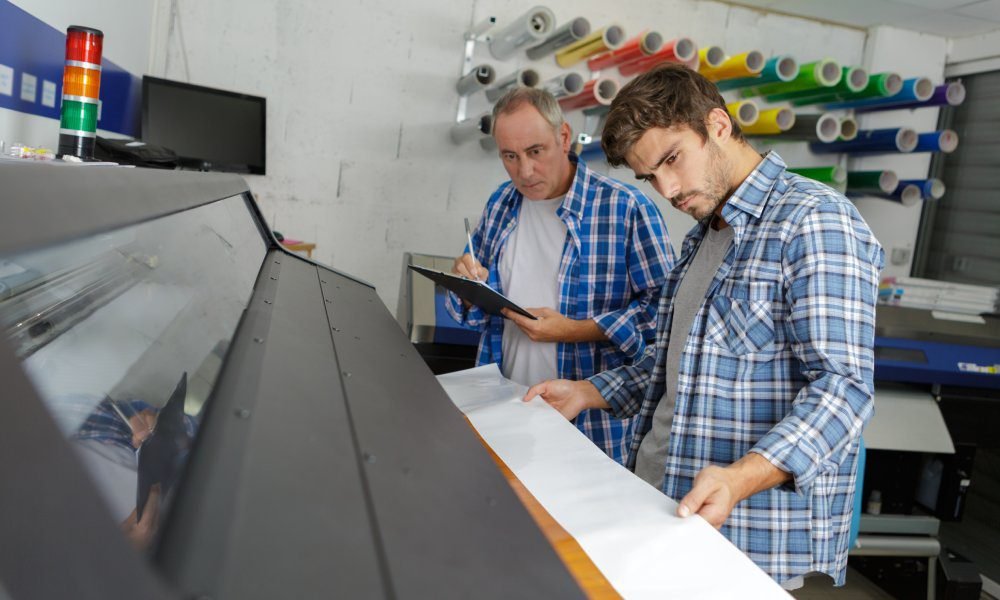Multifunction large-format printers are common in offices and print shops for creating high-quality, large-scale prints. These machines combine printing, scanning, and copying capabilities with various finishing options. Even though these printers are advanced, preparing personnel to use them maximizes their potential. Here’s a step-by-step guide to training your team to get you started.
Step 1: Introduce the Printer and Its Capabilities
Before using the printer, give your team an introduction. Highlight the device’s functions, from printing and scanning to finishing options like binding. Next, show examples of architectural plans, banners, or posters. When they know about the possibilities, they’ll be more confident using the printer.
Point out the physical components—the touchscreen, paper trays, ink cartridges, and other parts. Giving your team a close look at the printer’s structure will prevent confusion when they operate it later.
Step 2: Create User Roles and Responsibilities
Not everyone on the team needs to know every feature. Break responsibilities into manageable roles. For example, one person handles file prep, another focuses on loading the printer, and a third oversees quality control. Assigning tasks reduces mistakes and creates a smoother workflow.
Step 3: Focus on Printer Settings and Maintenance
Review the settings that affect the most common tasks, such as adjusting the resolution for various prints or scaling designs for different paper sizes. Specify how to scan versus print.
Maintenance is just as important. Teach your team how and when to replace ink cartridges or load paper to prevent interruptions.
Sometimes, using the wrong supplies or operating the device in a room that’s too hot or cold can negatively affect performance. Avoid overheating your plotter printer and protect it from breaking down by keeping it in a mild environment.
Step 4: Hands-On Practice
Learning by doing is one of the best ways for your team to gain confidence. Schedule hands-on sessions where they can operate the printer. Have them print simple projects, like a test poster or a draft, so they can become comfortable with the interface and process.
If your printer model has advanced features, such as finishing tools or double-sided printing, include this in your teachings. Repetition is the quickest path to muscle memory.
Step 5: Provide Helpful Resources
Provide your team with user manuals, quick reference guides, online resources, and video tutorials. Many printer manufacturers offer customer support to answer technical questions. Having these materials handy will help your team troubleshoot independently.
Step 6: Encourage Ongoing Feedback
Even with training, occasional troubleshooting is inevitable. Create an open line of communication where your team can share feedback or ask questions. Problems often indicate areas that need more attention or further updates.
Training your team on multifunction large-format printers creates efficient processes and boosts confidence. By combining structured guidance, practice, and resources, any team can unlock this equipment’s full potential without feeling overwhelmed!
